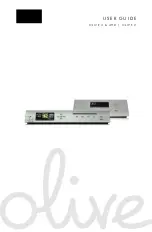
Figure 26. Installing caster wheels
Next step
1
Follow the procedure listed in
Before working inside your system
.
Drives
Removing a drive blank
The procedure for removing 2.5 inch and 3.5 inch drive blanks is identical.
Prerequisites
1
Follow the safety guidelines listed in
2
If installed,
CAUTION:
To maintain proper system cooling, drive blanks must be installed in all empty drive slots.
CAUTION:
Mixing drive blanks from previous generations of PowerEdge servers is not supported.
Step
Press the release button, and slide the drive blank out of the drive slot.
70
Installing and removing system components
Summary of Contents for EMC PowerEdge T640 D24XR
Page 23: ...Figure 16 Configuration and layout Dell EMC PowerEdge T640 overview 23 ...
Page 24: ...Figure 17 Electrical overview 24 Dell EMC PowerEdge T640 overview ...
Page 25: ...Figure 18 Memory information Dell EMC PowerEdge T640 overview 25 ...
















































